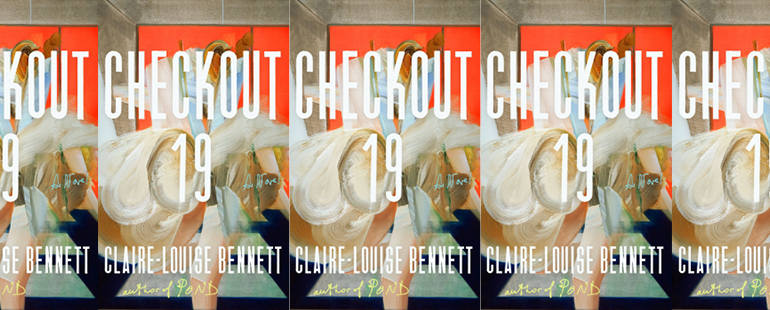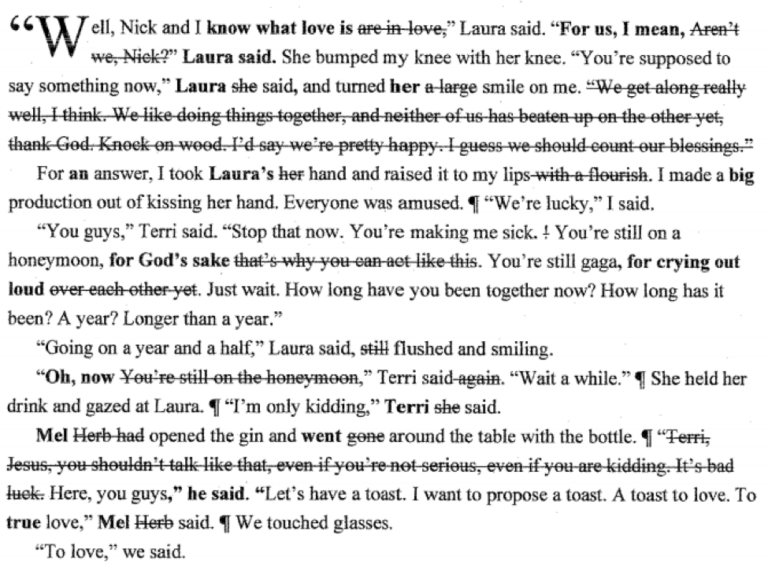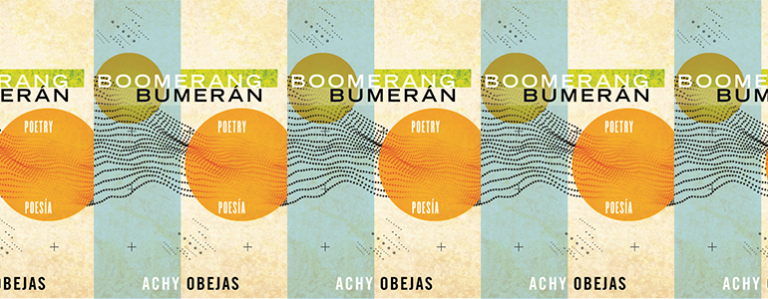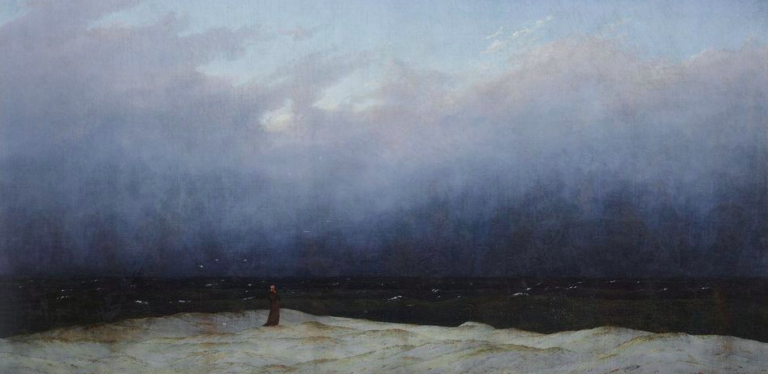Women’s Rage

A woman’s body is an ocean. We know this. Women have been compared to the sea since the beginning of time. The ocean can seem mysterious just like a woman. It can evoke calm in the same way a woman is meant to provide comfort to those around her. Its body is wet like a woman’s, and from this wet body came an entire world, the ocean as mother. But the thing about the ocean is that within all its shades of blue, some so dark they are almost black, there is power. The ocean can kill you at any moment. It does not care. For all the times the ocean looks serene on its surface, maybe even sincere, there is really a violent rage roiling just underneath, ready to drag you down and drown you, your body quickly turning to pulp in the brine. If the ocean is a violent, unrelenting body, then women must also possess their own ferociousness, even if it, too, must remain floating just below our surfaces.
In Claire-Louise Bennett’s Checkout 19, out today, women’s bodies are described as containing this violence, as if someone were to take the whole ocean and place it in a mason jar with the lid screwed on tight. Throughout the book, Bennett takes up this jar and shakes it, stirring up all the women throughout literature who have been sealing their anger away to let it churn undisturbed at the center of themselves. To the public, it is an undesirable rage and so must be kept hidden; but the bodies of these literary women, and all women for that matter, bear the marks of their fury, whether it is visible or not.
The novel tells the story of an unnamed woman narrator whose journey towards self-discovery happens mostly through her encounter with the books she reads. She views the books as a sort of ouroboros—a metaphor Bennett uses frequently—in which one is beginning and ending repeatedly throughout the telling of a story just by turning the pages. This metaphor relates to the way the narrator comes to understand her own life. She is a woman, and to be a woman means to be predisposed to already-decided opinions, customs, and beliefs about womanhood from the moment you are born. Similarly, the narrator notes, women are often relegated to repetitive roles, their sense of autonomy taken from them through marriage, childhood, and “women’s” work. It is true that with each turn of a page, you progress further and further into the story, but what happens when the story never changes? What is a body to do with all that pent up frustration of “living and dying and living and dying and living and dying. Again, and again”?
When we acknowledge the often mindless repetition of many women’s lives, we must also acknowledge the worn down groove of resentment that this repetition produces. A groove that eventually will turn into a canyon, filled with all of a woman’s discontent, dammed up by society’s expectations and the ridiculous belief that a woman should never exhibit her anger. Bennett goes so far as to suggest that the capacity to create such a channel for their fury is within each woman from birth, symbolized in the biology of the female body. The narrator recalls, as an example, the first time she got her period. Embarrassed by the idea of using pads, she inserted a tampon. Sitting in class soon after, however, she realized she was bleeding freely onto the floor. She quickly asked a classmate for help but was more curious than embarrassed: “…apart from the girl beside me, not one person in the room knew or suspected there was a small pool of blood on the classroom floor, warm and human, directly beneath my wooden stool,” she thought. There’s a kind of eroticism to this moment. The narrator’s insides are very literally spilling out of her, visible to everyone in the room. But she isn’t bothered by this sudden display of her body’s messiness. Instead, she feels empowered by the sight of the gore that had been stopped up within her. She wants you to look at it, to see it for what it is, that river of anger, of violence, finally unstopped and free to flow. “I am a bleeding bloody creature, see how I bleed and bleed, look at all the blood crinkle-oozing out of me, onto my ankles, onto the ground, onto the street, onto your smart shoes. Bright as a ruby, dark as a garnet.” What is blood if not a symbol of ferocity? And what can a young girl glean from the common belief that this ferocity must be staunched up and kept hidden, a monthly source of shame rather than pride? Stopper the anger. At all costs, keep it inside.
Perhaps one of the most prescient parts of the book comes in the form of the narrator’s rape. When it happens, she appears almost despondent, resigned to the entire moment as if she’d been expecting it to happen her whole life. Her rapist is a friend of hers, someone she has grown to trust and love, but he refuses to take no for an answer (“Come off it woman,” he said, “you don’t have to do very much.”). The narrator tells herself, “…don’t push him away and don’t wriggle down the sofa, if you start doing that…that’ll make it into a dreadful scene and you don’t want that…so don’t do anything.” She resigns herself to the man, and more importantly, she also resigns herself to her own anger. She actively refuses to allow herself to get violent because she does not want to make “a dreadful scene.” She staunches her rage because what else is a woman supposed to do? After, she goes home and tries to forget.
The narrator of Checkout 19 comes to understand that she, and all the women in her life, must resign herself to her inner turmoil, even if at first she finds herself perplexed by it. When she was younger, “women were sort of ghostly and they put [her] on edge.” She was fearful of the unspoken rage that always seemed to be alive within. “It wasn’t as if they weren’t occupied,” she says of the women around her. “They were always doing something, always seemingly immersed in some straightforward domestic way, chopping, mending, sweeping, wiping, folding, wringing, peeling, rinsing, but their eyes were fixed on something else, something I couldn’t fathom.” Like a glassy ocean surface, the serenity of these women never fully masked the churning going on below.
When the narrator begins to read more women and more feminist texts, she starts to understand and relate to the women around her better. Her reading awakens something inside, and she finds herself “roused [by] an inherent anger that was ancient and bloodthirsty.” Suddenly, the glassy faced women of her childhood begin to make sense, their far-away looks no longer ghostly but rather a sign of their own resignation. Recognizing this, the narrator’s own gulf of rage is awakened, but she still finds it difficult to access and destroy the dam within her that would allow her anger to spill freely out into the world. She becomes an ouroboros, unable to escape her own habits of anger replaced with rage replaced with anger over and over again without ever getting anywhere. She is a closed circuit of womanly violence and rage, her power locked away inside of herself, the gulf of her fury doing nothing but widening.
One of the literary characters that the narrator relates to the most is Lucy Honeychurch, from E.M. Forster’s A Room with a View (1908). In the novel, Honeychurch witnesses the violent stabbing of a man one day; the narrator of Checkout 19 also witnesses the violent aftermath of a man’s death near the novel’s end, soon after her rapist has (poorly) apologized for raping her and invited her to stay at his family’s home while they are away on vacation—an abysmal attempt at seeking redemption. Typically, it is the woman who gets stabbed, shot, or struck, but in both A Room with a View and Checkout 19, the roles are reversed, allowing, for once, the woman bystander to be witness to a man’s pain. The violence that has been manifesting inside of Bennett’s narrator at the hands of the men-dominated society she exists in is finally displayed in the form of a man’s death that she is permitted to witness. When she sees the man hanging from a tree in the park, all she can think is, “He had to be seen and I had to see him.” Later, she will comment on how her rapist will be jealous of her luck in finding the dead man. “He’d lived there his whole life and had never seen such a thing,” she will say. And when she notices that “he was envious” of her, she will also understand his emotions encompass fear, a fear of her, as well. “Something morbid within me drew me towards dreadful things,” she will think, the power of women’s violence suddenly on full display.
Through all her reading, the narrator of Checkout 19 begins to realize that the way for a woman to cross that gulf of frustration within must be through the written word. If society looks down on an angry woman, a violent woman, perhaps they will be more willing to bend to one whose anger and violence seem to solely exist on the page. There, at least, men can be soothed into thinking all that feminine animosity is somehow contained within the white space. When the narrator’s boyfriend finds her story about a dimwitted selfish man who misunderstands the importance of literature, however, his sole response is to shred her work into unreadable pieces and leave it on the floor of their bedroom for her to find. Understandably, she is devastated at the loss, but she recognizes her partner’s rage as frustration over his inability to access the depths of her that her work contains. “Writing took me away from him, to a place he didn’t understand and couldn’t get to,” she says, demonstrating how perhaps women’s inherent violence turned inward has an outlet in the written word. On the page, there is no one to stop a woman from releasing all of her bloody self, and while her work and her words may still anger those around her, they will be unable to stopper her power in the same way they stopper her actions. Here, she is free to spill out the contents of her jar and stain the pages with ink, her oceanic promise of care and violence finally free to wash over the world.
In the end, the narrator returns to this idea of the ocean, recognizing herself and her desires within it. Ultimately, all she has ever wanted was to exist as her truest self, a woman capable of care just as much as she is capable of violence. Within her, she contains magnitudes of restless water just looking for a way to leak out. She is a body of water no longer fit for a jar; she wants to return to the sea. “The waters of the shifting oceans give palpability to the ultimate ontological fantasy,” she says, “that it is possible to be boundless and permeable while holding on to one’s essence, one’s ‘first shape.’”


